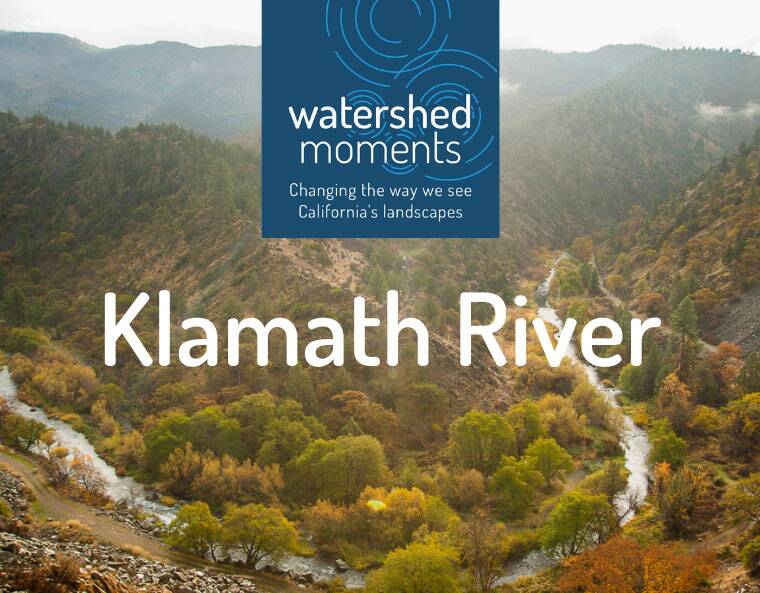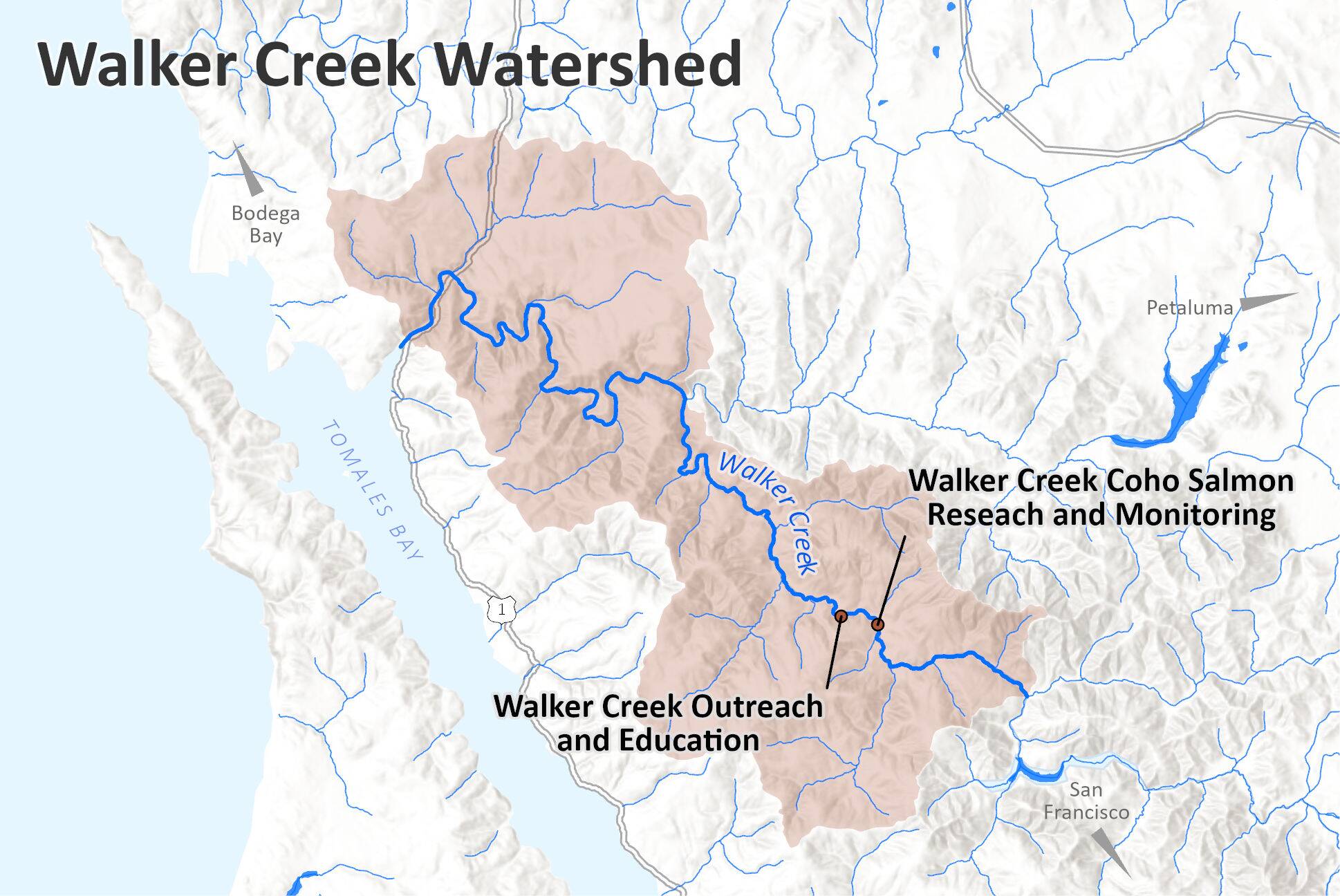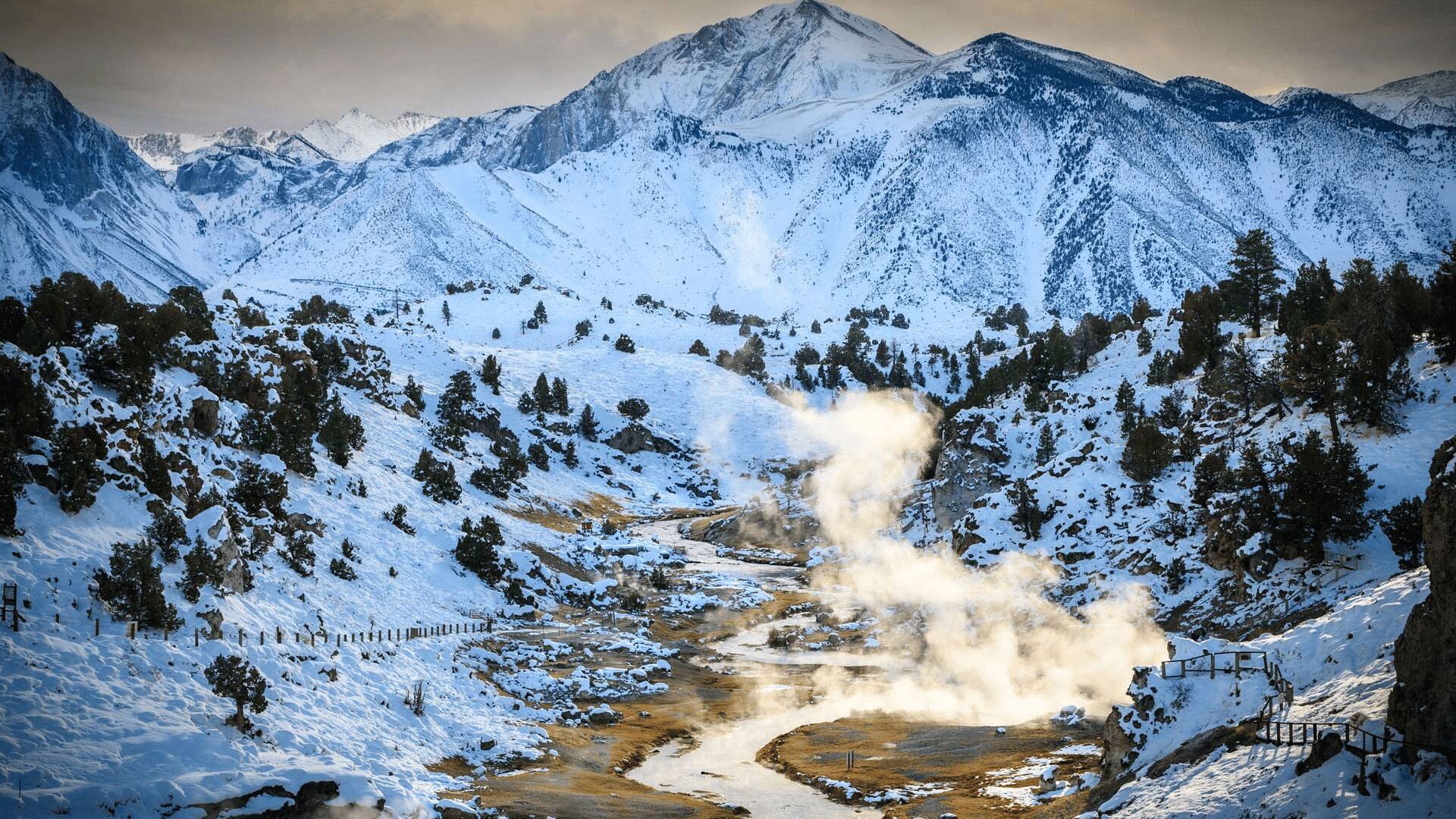California Trout is proud to present Watershed Moments to educate, enlighten, and connect you to key California watersheds.
No matter where you live, your home is in a watershed: a land area that drains to a central location, such as a lake, river, or ocean. Watersheds impact everyone; every community, farm, ranch, and forest. They provide a vital resource for all living things to survive and thrive.
There are countless watersheds across California- some as large as the San Francisco Bay, some as small as a creek- each of them important and unique.
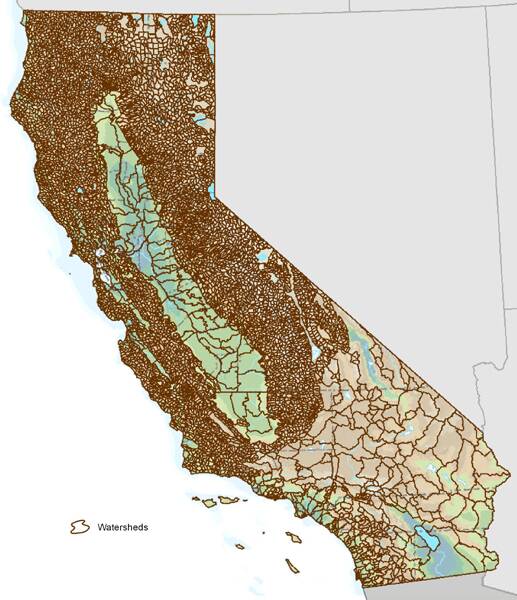
Source: California Department of Forestry and Fire Protection
The map above shows the boundaries of the thousands of watersheds in California. Watersheds can be described as "nested" - larger watersheds encompass many smaller watersheds. They all fit together like puzzle pieces to form our land masses.
Watersheds Explained
What exactly is a watershed?
When water falls as rain or snow, it flows downhill, coming together as creeks, streams, and rivers and eventually reaches an outlet, a body of water such as reservoirs, bays, and the ocean. The entire area of land that the water flows through is called a watershed. Gravity helps to guide the path that water takes across the landscape. In a very general sense, the overall shape of a watershed is a basin, with the river or waterway running along the bottom.
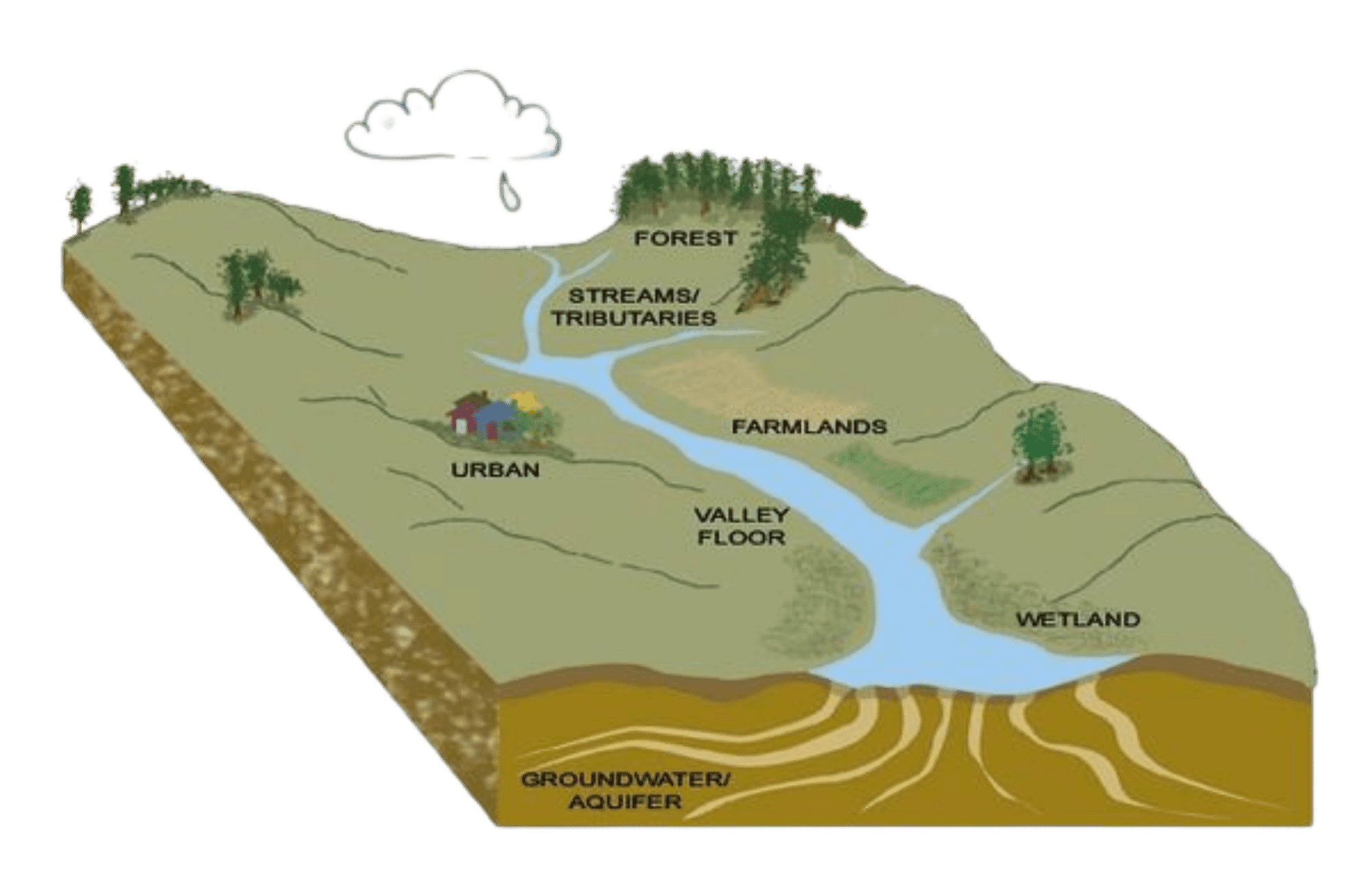
Source: U.S. Environmental Protection Agency
Watersheds consists of surface water- lakes, streams, reservoirs, and wetlands- and all the underlying groundwater and aquifers located underground that contribute water up above.
Every body of water has a watershed. They can be as small as a pond, while others can encompass thousands of miles of land and waterways that are draining into a body of water.
Why Watersheds Matter
Watersheds are more than just water. They contain the full spectrum of people, animals, and plants that live and grow inside the system. The health of humans and wildlife is intimately connected to the health of their watersheds. What happens upstream, near the source of a watershed’s water, affects what goes on downstream, and all through the basin. Watersheds are all connected. They are a natural network that ensures healthy environmental function for the benefit of us all.


Healthy Watersheds
Watersheds help sustain life- in many ways. Healthy watersheds not only improve water quality, but also provide greater benefits and vital services to communities such as clean drinking water, productive fisheries, and outdoor recreation all of which supports our economies, environment, and quality of life. Importantly, watersheds that have their intact natural land cover are better adapted to more extreme weather patterns and capable of sequestering carbon, thereby offsetting greenhouse gas emissions.
The conditions of our watersheds is important to everyone and everything that uses and needs water. All water is heavily influenced by the condition of surrounding watersheds.
What makes a healthy watershed? In a healthy watershed, water, soil and air are clean. People, as well as fish and wildlife, have the water, food, shelter, and other resources they need to survive and to thrive. A healthy watershed has the structure and function in place to support healthy aquatic ecosystems.
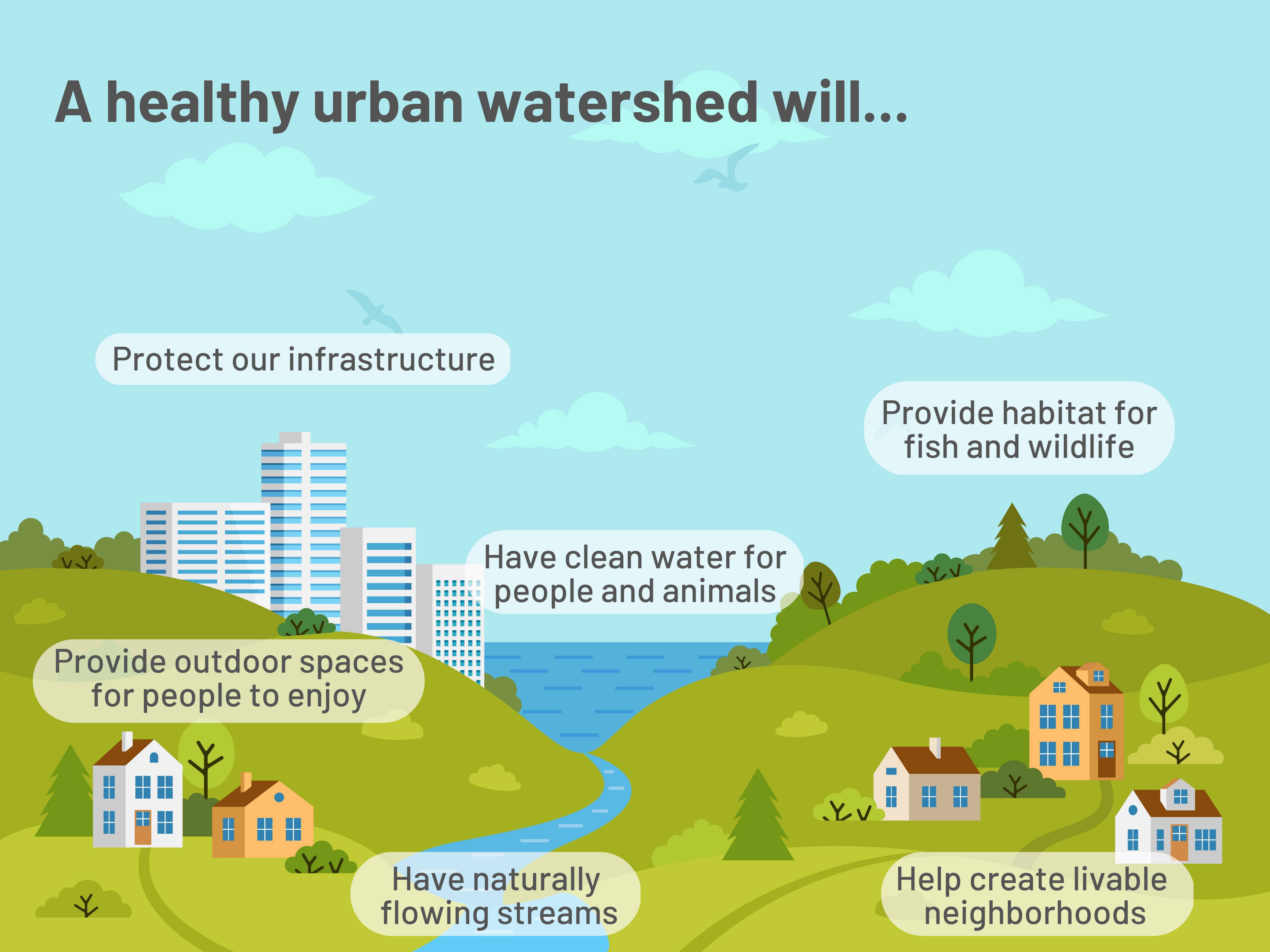
Protecting Watersheds
Watershed conservation is crucial, especially now as we face growing water supply issues and changes in climate. More major threats to healthy watersheds, caused or exacerbated by humans, include:
- Pollution from trash, pesticide use, pet feces, etc. that enters the water system.
- Man-made changes to a river, such as damming, channelizing, and leveeing.
- Land development, interrupting the natural flow of water.
- And forest fires.
It is vitally important to protect the quality of our watersheds since our water supplies, agriculture, animal habitat, and recreation are all dependent on healthy watersheds.

Conservation of watersheds involves the protecting of a lake, river, or stream by managing the entire watershed that drains into it.
California Trout is currently implementing 60+ conservation projects across California and engaging in policy and advocacy at the state capitol to actively protect California’s watersheds and the sacred life within them. By restoring natural environments and working in areas where we can make the most positive impact, we can help ensure healthy watersheds for generations to come.
Read on to learn more about CalTrout's involvement in watershed conservation as we share featured stories on a few of California's key watersheds:
Malibu Creek Watershed
Malibu Creek watershed in Southern California drains just over 100 square miles of land into Santa Monica Bay. Over 90,000 human residents call this watershed home, as do countless plant and animal species such as the endangered Southern California steelhead.
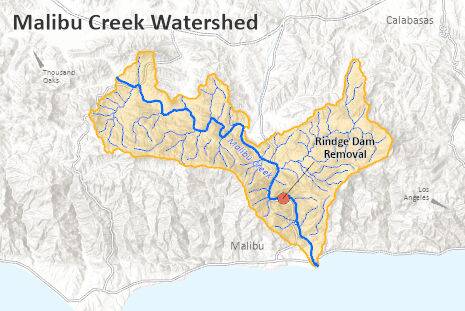
Location:
Northwestern end of Los Angeles County and the Southern end of Ventura County.
Size:
109 sq. mi., Second largest watershed draining into Santa Monica Bay.
Communities served:
Over 90,000 human residents in five cities and unincorporated areas of LA and Ventura counties.
Key native fish in the watershed:
Southern California steelhead
Voices of Malibu Creek Watershed

Russell Marlow
CalTrout South Coast Project Manager
"A big watershed moment for Malibu Creek Watershed was the construction of Rindge Dam in the 1920s. It completely blocked the waterway and created the landscape that we know today. The next big change for Malibu Creek will be the removal of that dam.”

Bernard Yin
SoCal Resident
"Having visited many Southern California trout streams, I see Malibu Creek watershed, with its large, beautiful lagoon and inviting perennial pools, as one of the best candidates for restoration... Trout need clean water, and so do humans."

Danielle LeFer
Senior Environmental Scientist
California State Parks
"One of the biggest changes for Malibu Creek watershed was all the development along its edges. This is a big shame because Malibu Creek watershed is an important connector for wildlife as they move from one diverse habitat area to another."
CalTrout in Malibu Creek Watershed
CalTrout is working in Malibu Creek watershed to address the major threats to the health of the watershed such as barriers to fish passage, loss of critical habitat for wildlife, increased urbanization of the area, and water issues. Click on our projects below to learn more.
Klamath River Watershed
The Klamath River flows 253 miles from Southern Oregon through the mountains of far Northern California where it passes five hydropower dams before ultimately reaching the California coast, draining a basin of more than 10 million acres. The watershed is renowned for its majestic lakes, rivers, fishing opportunities, and strong agricultural economy.
Location:
Northwestern California and south-central Oregon
Size:
Over 10 million acres; drains the third largest river south of Canada flowing into the Pacific Ocean
Communities served:
5 California counties and 3 Oregon counties; most populous towns are Klamath Falls, OR (19,462) and Yreka, CA (7,290)
Key native fish in the watershed:
Chinook salmon, coho salmon, steelhead
Voices of Klamath River Watershed

Dr. Ann Willis
California Regional Director
American Rivers
These rivers are so complex. The different pieces of them come together in such a mysterious and miraculous way. It's foolish to try and predict the outcome of [dam removal], and I think it's almost more magical to be surprised by it and to choose to be open to learning what we don't know.”

Robert Lusardi, Ph.D.
CalTrout-UC Davis Wild and Coldwater Fish Scientist
"I think of rivers as like the arteries in your body. Arteries deliver blood and oxygen throughout the human body, similar to how rivers deliver organic matter throughout the watershed. When that river is severed by a dam, the river can no longer function as it did for thousands of years. This has major implications for the ecosystem."

Barry McCovey
Yurok Tribe Member
Yurok Tribe Senior Fisheries Biologist
“The Yurok Tribe are ‘fix the world’ people. Looking at the Klamath River today, it is bisected by four dams, cutting off the energy flow. That is the definition of imbalance in an ecosystem. Pulling those dams out of the river and reconnecting the lower and upper basin for the first time in 100 years will be very meaningful to the Yurok people and other Tribes.”

Pergish Carlson
Yurok Tribe Member
Owner, Blue Creek Guide Service
"This is my home, where I’ve called home. The Klamath River is where my family is from… I’ve seen the Klamath water in winter and spring when it’s cold, clean, and crystal clear, then later in the year, as the water warms and slows, you start seeing the algae which affects the fish big time. But with restoration, it’s been shown that if you help the river a little, then leave it alone, it will come back. Everything heals in time."

Mark Bransom
Klamath River Renewal Corporation
CEO
“The Renewal Corporation is standing on the shoulders of the Tribes, the conservation community, and all others who have been fighting the good fight for so long."

John Rickard
Wild Waters Fly Fishing, Owner
"Driving up and down the Klamath River’s corridor, you’ll see a lot of defunct fishing lodges, which shows us that at one time, the river was able to support a lot of fishing. I’ve been following the Klamath Dam removal project for a while. Our business of taking people fishing will be affected by it in the short run, but I am perfectly willing to give up a couple years of guiding this river if that’s what it takes to get it to recover. I’m excited to see the Klamath River go through a great change for the better."

JP Thompson & James Rickert
Farm Managers, Belcampo
"It’s important to us that we are good stewards of the land, and it’s also important to us that we exemplify how we might have productive relationships with groups like CalTrout.” - JP
"Our occupation is ranching, and we still need to have a job on these ranches. But we want to be very respectful of the watershed, and we want to do what we can to be as sustainable a ranching operation as possible." - James
CalTrout in the Klamath River Watershed
CalTrout is working to protect and revitalize the Klamath River Watershed by addressing major threats to its health including fish passage barriers from the Klamath dams, loss of critical habitat, and water mismanagement. While dam removal is a critical part of reviving the health of the watershed, so is restoration of important Klamath River fish spawning and rearing tributaries like the Shasta and Scott rivers. This will allow fish to more easily access and recolonize the upper Klamath River above the dams. Click on our projects below to learn more.
Walker Creek Watershed
Walker Creek, located in Marin County, flows year-round from the Soulajule Reservoir to Tomales Bay and the Pacific Ocean, draining approximately 76 square miles. Walker Creek is primarily a rural watershed with over 90% of its land privately owned for ranching and agricultural uses. Riparian woodland along the mainstem provides protected habitat for fish such as federally endangered coho salmon and threatened steelhead.
The health of the Walker Creek watershed has suffered from the building of Soulajule Dam and a history of intensive land use practices, with fish and wildlife populations greatly reduced from historical numbers. In past recent years and ongoing today, collaboration among conservation groups, natural resource agencies, and landowners has resulted in large amounts of restored habitat in the Walker Creek watershed and major increases in fish abundance.
Location:
Northwestern Marin County, CA
Size:
76 square miles
Communities served:
Concentrated development is solely in town of Tomales (pop: 181); Most land is used primarily for ranching, dairy, and/or agricultural operations. Over 4,000 students and conference attendees visit Walker Creek Ranch each year where CalTrout's projects are located.
Key native fish in the watershed:
Central California Coast coho salmon, steelhead, & California freshwater shrimp
Voices of Walker Creek Watershed

Patrick Samuel
Bay Area Regional Director
California Trout
“Walker Creek watershed is my favorite place to work. It feels so far away but is still right in the Bay Area. There are a lot of demands on this small watershed, and yet, the landscape is supporting commercial agricultural operations as well as endangered species such as coho salmon. I think it has a lot of potential to support and be an impressive demonstration site for some neat restoration and conservation actions.”

David Hines
Senior Environmental Scientist and Coho Salmon Recovery Coordinator
California Department of Fish and Wildlife
“We’re asking ourselves: ‘Are the adults returning to the watershed? Are they able to access spawning areas? Are they successfully spawning? Are juveniles getting enough cold water in the summer for them to survive?’ I really enjoy the science side of my work, the unraveling of these important questions.”

Patrick McLaughin & Kris Jacobsen
Ranch Manager/ Outdoor School Principal & Assistant Ranch Manager (respectively)
Walker Creek Ranch: Outdoor School and Retreat Center
“Having that younger generation here and being able to share our knowledge of the importance of the environment is amazing. Some of them are engaging with the land in a way that they’ve never done before. That produces a sacred feeling.” - Kris
“Being part of such a unique place such as Walker Creek watershed and connecting kids to nature makes me feel very fortunate and blessed to have this as my career.” - Patrick
CalTrout in the Walker Creek Watershed
CalTrout is working to inform management and restoration in the watershed by identifying habitat quality and usage by salmon and steelhead. Participation and collaboration with landowners and the community, including schoolchildren, is critical to the success of our projects in Walker Creek.Click on our projects below to learn more.


